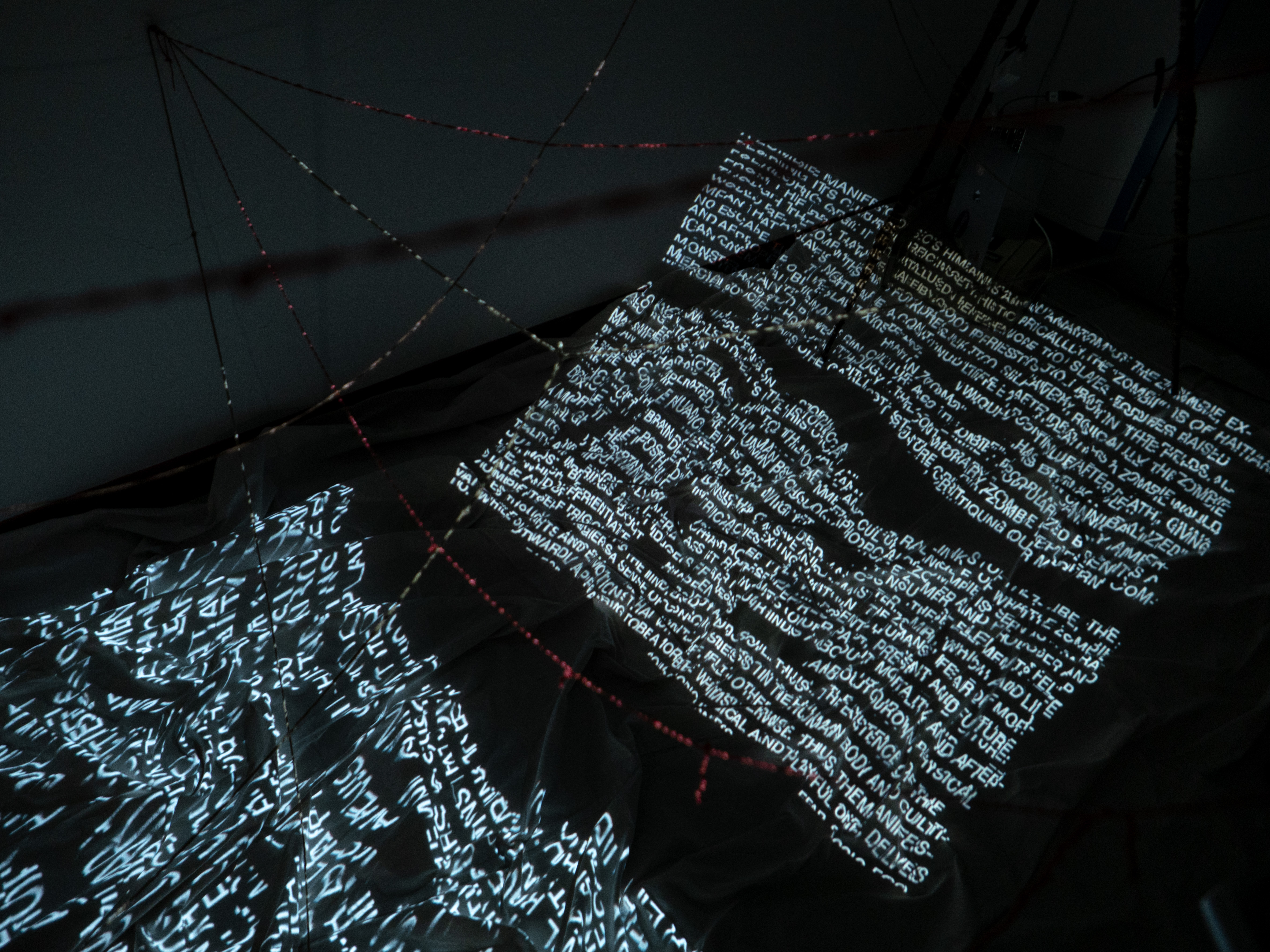









Collaborative project – An installation piece responding to Sarah Juliet Lauro and Karen Embry’s ︎︎︎
A Zombie Manifesto: The Nonhuman Condition In the Era of Advanced Capitalism – The installation explores the metaphorical meaning and representation of the “zombie” in human psychology. While still paying homage to its origins and history, the piece dissects the meanings and anatomy of the “zombie”, analyzing its cultural currency in society. Ideas of consciousness, fear, socio-economic dynamics and historical tensions are highlighted. The space focuses on using visual, auditory, and tactile senses to design an experience that represents the “zombie”: a repetitive, taxing, and laborious nature of an endless cycle.
Historically the "zombi" came from Haitian folklores, representing the vicious cycle of labor - this figure played an important role in the Haitian Revolution/slave rebellion. The zombie has since then been appropriated and popularized by western culture - aside from its association with cinema and horror, the contemporary zombie represents a fear of mortality and the capitalist structure of our modern society.
Historically the "zombi" came from Haitian folklores, representing the vicious cycle of labor - this figure played an important role in the Haitian Revolution/slave rebellion. The zombie has since then been appropriated and popularized by western culture - aside from its association with cinema and horror, the contemporary zombie represents a fear of mortality and the capitalist structure of our modern society.
A Zombie Manifesto // Written Response
A Zombie Manifesto – dissects the meanings and anatomy of the zombie, exploring its cultural currency in society. Historically, the “Zombi” is of Haitian folkloric origin. It was initially used in reference to slaves, bodies raised from the dead, that were raised by Voodoo priests to labor in the fields. Although the zombi myths and folklore link to slavery, ironically the zombie would be a slave’s nightmare. A continued life after death as a zombie would mean that the slave existence would continue after death, giving no escape. The original Haitian zombi has been “cannibalized” and appropriated by Western culture as the “Zombie”. Popularized by American cinema and horror mythology, the contemporary zombie represents a monster and speaks to the capitalist structure, critiquing our modern commercial society.
Along with focusing on the historical and cultural links of the zombie, the manifesto also dwells into the more metaphorical angle of what the zombie represents in human psychology. The zombie is seen as a paradoxical character as it is both living yet dead, a consumer and producer and a more complicated relationship of a slave and master. These elements help highlight the nuances of intricacies existing within the zombi, which add life to its “brain dead” character. It represents humans’ fear of mortality and the posthuman era as it represents our past, present and future. But, most importantly, it induces fear in our minds about mortality and afterlife, which brings about awareness about our own physical state and differentiates the mind, body and soul. Thus, the existence of the zombie itself triggers a sense of consciousness in the human body and cultivates thoughts and emotions that won’t be felt otherwise. Thus, the manifesto, while outwardly appearing to be a more whimsical and playful one, delves into deeper ideas of consciousness, fear, socio-economic dynamics and historical tensions.




